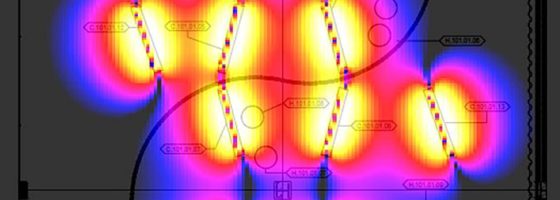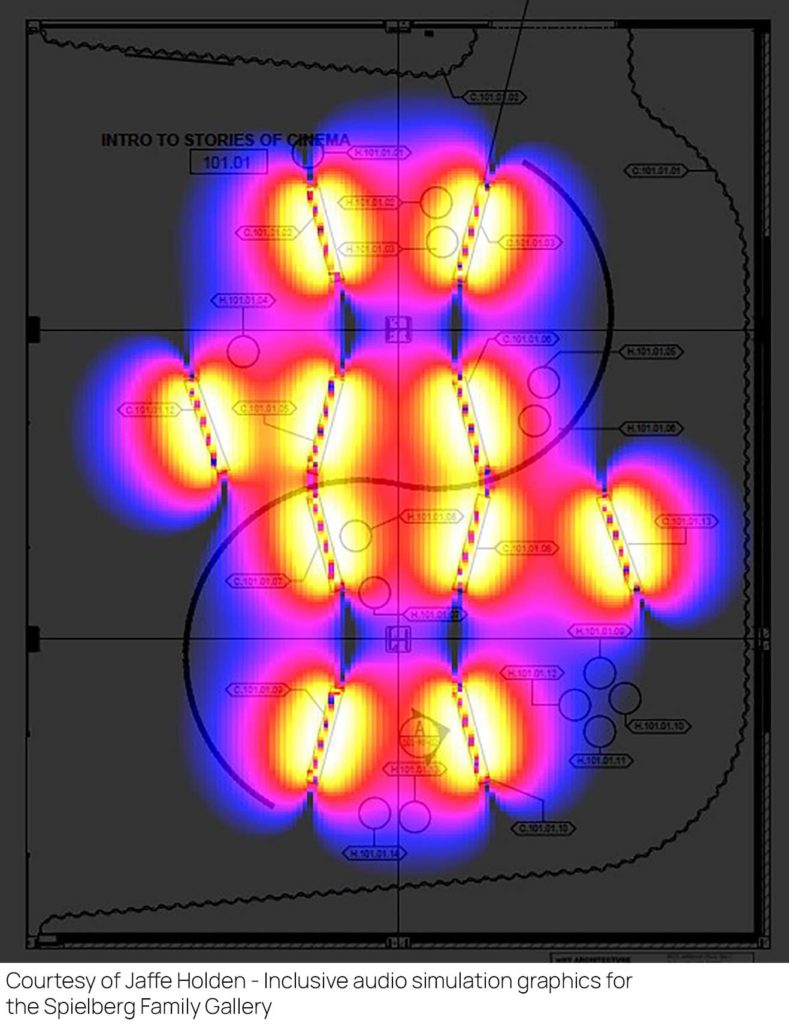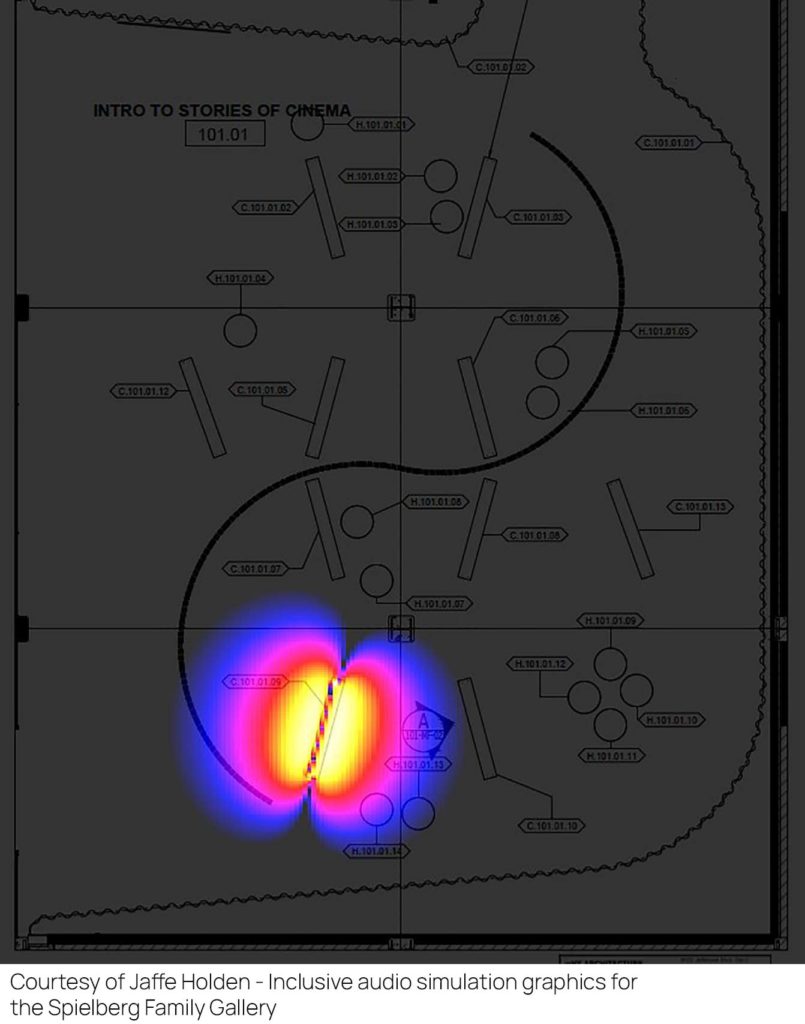Inclusive Audio Design at the Academy Museum of Motion Pictures
Catherine Halstead, Marketing Communications Manager | March 17, 2022

Today’s best practices in the architecture, engineering, and construction industry call for inclusive designs that provide an egalitarian experience for all. There are protections in place that require accessibility of spaces through civil rights laws such as the Americans with Disabilities Act, but inclusive design goes beyond accessible design. Inclusive design factors in an even wider section of the population with diverse needs who may not have a legally recognized disability, such as a person with sensory issues or a temporary disability. The primary objective of inclusive design is to remove barriers for anyone who may be excluded from the full use or enjoyment of a space, such as a museum, performing arts center, or cultural center, and to consider each end-user as a unique individual with varying needs.
Jaffe Holden uses this approach for all of our projects, such as the recently completed Academy Museum of Motion Pictures in Los Angeles, CA, which includes theaters, multi-use event spaces, and gallery and exhibit spaces. In addition to hosting private events for film industry professionals, the Museum offers public programming such as screenings, premieres, panel discussions, gallery talks, and K-12 education initiatives.
Inclusive audio design and accessibility was a priority for every space involved in this project in order to provide a robust experience for all. Induction loop systems enable sound to be beamed directly into hearing aid devices through a magnetic field within the theaters, public spaces, and the ticket and information booths. Assisted listening systems are integrated into the museum exhibits, enabling sound to be transmitted directly into patrons’ hearing aids.
Ben Bausher, Associate Principal who led Jaffe Holden’s audio/video design for the Academy Museum project, was recently interviewed by Matilda Bathurst of WHY Architects for their article “The Unseen Story: Invisible Impact at Academy Museum.”
“When we were brought in to develop inclusive audio systems for the museum, we knew that this meant more than just meeting the ADA requirements for assistive listening. Our goal was to really bring out the sonic qualities of the different exhibits, creating the best possible experience for visitors who use T-coil hearing aids.
Our work involves designing induction loop systems – essentially a coil of wires with a magnetic field that can be modulated in size as visitors walk in and out of an exhibit’s range. In a typical gallery, you might have one central presentation with audio content that is sent into the induction loop system and received by T-coil users. So, a fairly simple process. But in these larger and more complicated cinematic spaces, there can be multiple speakers with location-specific directed audio – and there’s often an ambient sound bed of background noise, same as what you’d get in a movie theater. We had to strategize ways to replicate that experience for T-coil users, and in many cases – such as the sound installation about space movies, Behold, and the sound bath featuring the work of composer Hildur Guðnadóttir – we actually ended up creating custom mixes specifically designed to be transmitted via the induction loop system.”
“And there’s another challenge worth mentioning – it’s possible to build a concrete wall as an acoustic buffer, but that’s not going to stop a magnetic field. To address this, we assembled a tetris block layout of all the spaces and their vertical and horizontal adjacency, for the purpose of understanding what type of loop we could deploy in each area. That was where things got really fun – the initial planning and layout process, looking at all the heat maps of the magnetic simulation graphics and designing the systems accordingly. Overall, this was a project like no other and it gave me a whole new perspective on what it means for audio experiences to be truly inclusive.”
With the additional design challenges of meeting today’s standards comes a greater reward when a space can accommodate a diverse group of end-users with varying needs and abilities. While in the past a significant amount of people were excluded from accessing many civic and cultural spaces, we can now utilize technological advancements to create inclusive designs that not only enable accessibility for all but also encourage and welcome people from all walks of life.
Read more about the Academy Museum of Motion Pictures project.



Comments